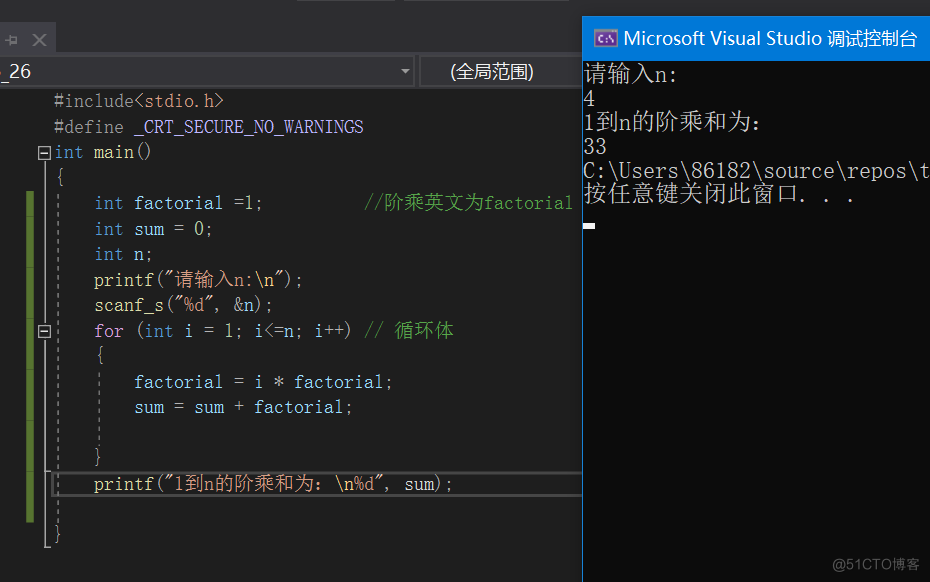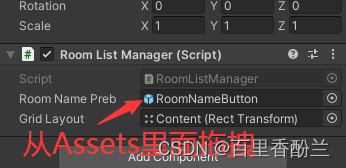当前位置:网站首页>T5 attempt
T5 attempt
2022-07-03 10:56:00 【Dongxuan】
0 background
1. Wrong location :self.hparams = hparams Change it to self.save_hyperparameters(hparams)
2.xm The bag belongs to torch_xla This bag is about TPU Directly and manually mask statements .
3. My is python39 In fact, many of them are pytorch_lightning Version issue for . therefore .... You can change the version to solve the following problems , I'll just use the new version .
checkpoint_callback = pl.callbacks.ModelCheckpoint(
dirpath=args.output_dir, monitor="val_loss", mode="min", save_top_k=5#prefix="checkpoint",
)
4. About :amp_level

Can shield amp_level Parameters
perhaps Trainer(amp_backend='apex', amp_level='O2') The parameters passed in have settings amp_backend='apex'
5. TypeError: forward() got an unexpected keyword argument 'lm_labels'
return self.model(
input_ids,
attention_mask=attention_mask,
decoder_input_ids=decoder_input_ids,
decoder_attention_mask=decoder_attention_mask,
labels=lm_labels,#lm_labels
) 6. take proc_rank Change it to global_rank
7.TypeError: optimizer_step() got an unexpected keyword argument 'on_tpu'TypeError: optimizer_step() got an unexpected keyword argument 'on_tpu' · Issue #5326 · Lightning-AI/lightning · GitHub
#def optimizer_step(self, epoch, batch_idx, optimizer, optimizer_idx, second_order_closure=None):
def optimizer_step(self,
epoch=None,
batch_idx=None,
optimizer=None,
optimizer_idx=None,
optimizer_closure=None,
on_tpu=None,
using_native_amp=None,
using_lbfgs=None):
#if self.trainer.use_tpu:
# xm.optimizer_step(optimizer)
#else:
optimizer.step(closure=optimizer_closure)
optimizer.zero_grad()
self.lr_scheduler.step()7. Debug reference link :
【1】
https://github.com/Lightning-AI/lightning/discussions/7525
【2】
【3】
exploring-T5/t5_fine_tuning.ipynb at master · patil-suraj/exploring-T5 · GitHub
1. Import package
import argparse
import glob
import os
import json
import time
import logging
import random
import re
from itertools import chain
from string import punctuation
import nltk
nltk.download('punkt')
from nltk.tokenize import sent_tokenize
import pandas as pd
import numpy as np
import torch
from torch.utils.data import Dataset, DataLoader
import pytorch_lightning as pl
from transformers import (
AdamW,
T5ForConditionalGeneration,
T5Tokenizer,
get_linear_schedule_with_warmup
)
def set_seed(seed):
random.seed(seed)
np.random.seed(seed)
torch.manual_seed(seed)
if torch.cuda.is_available():
torch.cuda.manual_seed_all(seed)
set_seed(42)2. Fine tuning function
class T5FineTuner(pl.LightningModule):
def __init__(self, hparams):
super(T5FineTuner, self).__init__()
self.hparams = hparams
self.model = T5ForConditionalGeneration.from_pretrained(hparams.model_name_or_path)
self.tokenizer = T5Tokenizer.from_pretrained(hparams.tokenizer_name_or_path)
def is_logger(self):
return self.trainer.proc_rank <= 0
def forward(
self, input_ids, attention_mask=None, decoder_input_ids=None, decoder_attention_mask=None, lm_labels=None
):
return self.model(
input_ids,
attention_mask=attention_mask,
decoder_input_ids=decoder_input_ids,
decoder_attention_mask=decoder_attention_mask,
lm_labels=lm_labels,
)
def _step(self, batch):
lm_labels = batch["target_ids"]
lm_labels[lm_labels[:, :] == self.tokenizer.pad_token_id] = -100
outputs = self(
input_ids=batch["source_ids"],
attention_mask=batch["source_mask"],
lm_labels=lm_labels,
decoder_attention_mask=batch['target_mask']
)
loss = outputs[0]
return loss
def training_step(self, batch, batch_idx):
loss = self._step(batch)
tensorboard_logs = {"train_loss": loss}
return {"loss": loss, "log": tensorboard_logs}
def training_epoch_end(self, outputs):
avg_train_loss = torch.stack([x["loss"] for x in outputs]).mean()
tensorboard_logs = {"avg_train_loss": avg_train_loss}
return {"avg_train_loss": avg_train_loss, "log": tensorboard_logs, 'progress_bar': tensorboard_logs}
def validation_step(self, batch, batch_idx):
loss = self._step(batch)
return {"val_loss": loss}
def validation_epoch_end(self, outputs):
avg_loss = torch.stack([x["val_loss"] for x in outputs]).mean()
tensorboard_logs = {"val_loss": avg_loss}
return {"avg_val_loss": avg_loss, "log": tensorboard_logs, 'progress_bar': tensorboard_logs}
def configure_optimizers(self):
"Prepare optimizer and schedule (linear warmup and decay)"
model = self.model
no_decay = ["bias", "LayerNorm.weight"]
optimizer_grouped_parameters = [
{
"params": [p for n, p in model.named_parameters() if not any(nd in n for nd in no_decay)],
"weight_decay": self.hparams.weight_decay,
},
{
"params": [p for n, p in model.named_parameters() if any(nd in n for nd in no_decay)],
"weight_decay": 0.0,
},
]
optimizer = AdamW(optimizer_grouped_parameters, lr=self.hparams.learning_rate, eps=self.hparams.adam_epsilon)
self.opt = optimizer
return [optimizer]
def optimizer_step(self, epoch, batch_idx, optimizer, optimizer_idx, second_order_closure=None):
if self.trainer.use_tpu:
xm.optimizer_step(optimizer)
else:
optimizer.step()
optimizer.zero_grad()
self.lr_scheduler.step()
def get_tqdm_dict(self):
tqdm_dict = {"loss": "{:.3f}".format(self.trainer.avg_loss), "lr": self.lr_scheduler.get_last_lr()[-1]}
return tqdm_dict
def train_dataloader(self):
train_dataset = get_dataset(tokenizer=self.tokenizer, type_path="train", args=self.hparams)
dataloader = DataLoader(train_dataset, batch_size=self.hparams.train_batch_size, drop_last=True, shuffle=True, num_workers=4)
t_total = (
(len(dataloader.dataset) // (self.hparams.train_batch_size * max(1, self.hparams.n_gpu)))
// self.hparams.gradient_accumulation_steps
* float(self.hparams.num_train_epochs)
)
scheduler = get_linear_schedule_with_warmup(
self.opt, num_warmup_steps=self.hparams.warmup_steps, num_training_steps=t_total
)
self.lr_scheduler = scheduler
return dataloader
def val_dataloader(self):
val_dataset = get_dataset(tokenizer=self.tokenizer, type_path="val", args=self.hparams)
return DataLoader(val_dataset, batch_size=self.hparams.eval_batch_size, num_workers=4)logger = logging.getLogger(__name__)
class LoggingCallback(pl.Callback):
def on_validation_end(self, trainer, pl_module):
logger.info("***** Validation results *****")
if pl_module.is_logger():
metrics = trainer.callback_metrics
# Log results
for key in sorted(metrics):
if key not in ["log", "progress_bar"]:
logger.info("{} = {}\n".format(key, str(metrics[key])))
def on_test_end(self, trainer, pl_module):
logger.info("***** Test results *****")
if pl_module.is_logger():
metrics = trainer.callback_metrics
# Log and save results to file
output_test_results_file = os.path.join(pl_module.hparams.output_dir, "test_results.txt")
with open(output_test_results_file, "w") as writer:
for key in sorted(metrics):
if key not in ["log", "progress_bar"]:
logger.info("{} = {}\n".format(key, str(metrics[key])))
writer.write("{} = {}\n".format(key, str(metrics[key])))3. parameter list (data dir And ouput dir Modify according to the file location )
args_dict = dict(
data_dir="", # path for data files
output_dir="", # path to save the checkpoints
model_name_or_path='t5-base',
tokenizer_name_or_path='t5-base',
max_seq_length=512,
learning_rate=3e-4,
weight_decay=0.0,
adam_epsilon=1e-8,
warmup_steps=0,
train_batch_size=8,
eval_batch_size=8,
num_train_epochs=2,
gradient_accumulation_steps=16,
n_gpu=1,
early_stop_callback=False,
fp_16=False, # if you want to enable 16-bit training then install apex and set this to true
opt_level='O1', # you can find out more on optimisation levels here https://nvidia.github.io/apex/amp.html#opt-levels-and-properties
max_grad_norm=1.0, # if you enable 16-bit training then set this to a sensible value, 0.5 is a good default
seed=42,
)4. Now enter various github All kinds of Lord NLP Mission
IMDB review classification
!wget https://ai.stanford.edu/~amaas/data/sentiment/aclImdb_v1.tar.gz !tar -xvf aclImdb_v1.tar.gz
train_pos_files = glob.glob('aclImdb/train/pos/*.txt')
train_neg_files = glob.glob('aclImdb/train/neg/*.txt')
random.shuffle(train_pos_files)
random.shuffle(train_neg_files)
val_pos_files = train_pos_files[:1000]
val_neg_files = train_neg_files[:1000]
import shutil
for f in val_pos_files:
shutil.move(f, 'aclImdb/val/pos')
for f in val_neg_files:
shutil.move(f, 'aclImdb/val/neg')The above is to download one Imdb Evaluation level , There are two kinds of evaluation , Positive and negative . But the data set only tran and test . Here the code is extracted 1000 Paragraphs , form val Data sets .
There is nothing special about this document
This film is a good example of how through media manipulation you can sell a film that is no more than a very unfunny TV sitcom. In Puerto Rico the daily newspaper with the widest circulation has continuously written about the marvels of this film, almost silencing all others. Coincidentally the newspaper with the second largest circulation belongs to the same owners. The weekly CLARIDAD is the only newspaper on the island that has analyzed the film's form and content, and pointed out all its flaws, clich Mao s, and bad writing.<br /><br />Just because a film makes a portion of the audience laugh with easy and obvious jokes, and because one can recognize actors and scenery, does not make it an acceptable film.

Prepare Dataset
#tokenizer = T5Tokenizer.from_pretrained('t5-base')
tokenizer = T5Tokenizer.from_pretrained('t5-small')
# Try tokenizer function
ids_neg = tokenizer.encode('negative </s>')
ids_pos = tokenizer.encode('positive </s>')
len(ids_neg), len(ids_pos)
Package the downloaded data into T5 Acceptable form , here github The LORD said that there was no need for any prefix words , Just the original +</s> The form can be . And the punctuation marks in the text are preprocessed below .
Finally input to self.tokenizer.batch_encode_plus() Function , I guess it can be generated by itself id Number , fit get_item Function call , And convert English letters into token id. In this case T5 The file input form of is still very free . If it's short , A file , Examples of branch representatives , It can be easily described .
class ImdbDataset(Dataset):
def __init__(self, tokenizer, data_dir, type_path, max_len=512):
self.pos_file_path = os.path.join(data_dir, type_path, 'pos')
self.neg_file_path = os.path.join(data_dir, type_path, 'neg')
self.pos_files = glob.glob("%s/*.txt" % self.pos_file_path)
self.neg_files = glob.glob("%s/*.txt" % self.neg_file_path)
self.max_len = max_len
self.tokenizer = tokenizer
self.inputs = []
self.targets = []
self._build()
def __len__(self):
return len(self.inputs)
def __getitem__(self, index):
source_ids = self.inputs[index]["input_ids"].squeeze()
target_ids = self.targets[index]["input_ids"].squeeze()
src_mask = self.inputs[index]["attention_mask"].squeeze() # might need to squeeze
target_mask = self.targets[index]["attention_mask"].squeeze() # might need to squeeze
return {"source_ids": source_ids, "source_mask": src_mask, "target_ids": target_ids, "target_mask": target_mask}
def _build(self):
self._buil_examples_from_files(self.pos_files, 'positive')
self._buil_examples_from_files(self.neg_files, 'negative')
def _buil_examples_from_files(self, files, sentiment):
REPLACE_NO_SPACE = re.compile("[.;:!\'?,\"()\[\]]")
REPLACE_WITH_SPACE = re.compile("(<br\s*/><br\s*/>)|(\-)|(\/)")
for path in files:
with open(path, 'r') as f:
text = f.read()
line = text.strip()
line = REPLACE_NO_SPACE.sub("", line)
line = REPLACE_WITH_SPACE.sub("", line)
line = line + ' </s>'
target = sentiment + " </s>"
# tokenize inputs
tokenized_inputs = self.tokenizer.batch_encode_plus(
[line], max_length=self.max_len, pad_to_max_length=True, return_tensors="pt"
)
# tokenize targets
tokenized_targets = self.tokenizer.batch_encode_plus(
[target], max_length=2, pad_to_max_length=True, return_tensors="pt"
)
self.inputs.append(tokenized_inputs)
self.targets.append(tokenized_targets)utilize decode Function can embed id Change back to English .
dataset = ImdbDataset(tokenizer, 'aclImdb', 'val', max_len=512)
len(dataset)
data = dataset[28]
print(tokenizer.decode(data['source_ids']))
print(tokenizer.decode(data['target_ids']))Train
mkdir -p t5_imdb_sentiment
args_dict.update({'data_dir': 'aclImdb', 'output_dir': 't5_imdb_sentiment', 'num_train_epochs':2})
args = argparse.Namespace(**args_dict)
checkpoint_callback = pl.callbacks.ModelCheckpoint(
filepath=args.output_dir, prefix="checkpoint", monitor="val_loss", mode="min", save_top_k=5
)
train_params = dict(
accumulate_grad_batches=args.gradient_accumulation_steps,
gpus=args.n_gpu,
max_epochs=args.num_train_epochs,
early_stop_callback=False,
precision= 16 if args.fp_16 else 32,
amp_level=args.opt_level,
gradient_clip_val=args.max_grad_norm,
checkpoint_callback=checkpoint_callback,
callbacks=[LoggingCallback()],
)def get_dataset(tokenizer, type_path, args):
return ImdbDataset(tokenizer=tokenizer, data_dir=args.data_dir, type_path=type_path, max_len=args.max_seq_length)
model = T5FineTuner(args)
trainer = pl.Trainer(**train_params)
trainer.fit(model)
model.model.save_pretrained('t5_base_imdb_sentiment')Results screenshots


Eval
1. Report errors num_samples:shuffle =False
2. iter() next I'm not used to using functions , Report errors
for i in range(1):
for batch in loader:
print(batch["source_ids"].shape)
break3. Load the above trained model
model = T5FineTuner(args).cuda()
state_dict = torch.load(pytorch_model.bin file location )
# Find and join key One less. model. The prefix of
model.load_state_dict({("model."+k):v for k,v in state_dict.items()})4. code snippet
import textwrap
from tqdm.auto import tqdm
from sklearn import metrics
dataset = ImdbDataset(tokenizer, 'aclImdb', 'test', max_len=512)
loader = DataLoader(dataset, batch_size=32, shuffle=True)
it = iter(loader)
batch = next(it)
batch["source_ids"].shape
outs = model.model.generate(input_ids=batch['source_ids'].cuda(),
attention_mask=batch['source_mask'].cuda(),
max_length=2)
dec = [tokenizer.decode(ids) for ids in outs]
texts = [tokenizer.decode(ids) for ids in batch['source_ids']]
targets = [tokenizer.decode(ids) for ids in batch['target_ids']]
for i in range(32):
lines = textwrap.wrap("Review:\n%s\n" % texts[i], width=100)
print("\n".join(lines))
print("\nActual sentiment: %s" % targets[i])
print("Predicted sentiment: %s" % dec[i])
print("=====================================================================\n")Debug reference link :
Results screenshots

边栏推荐
- 公司里只有一个测试是什么体验?听听他们怎么说吧
- 那些一門心思研究自動化測試的人,後來怎樣了?
- .Net Core-做一个微信公众号的排队系统
- [roast & brain hole] Some Thoughts on the bullet screen interactive game of Wei Shu Wu Three Kingdoms when visiting station B
- Flink--自定义函数
- Pytoch has been installed, but vs code still displays no module named 'torch‘
- Leaders always entrust the work to flattering employees
- Take you into the cloud native database industry, Amazon Aurora
- Numpy quick start (III) -- array advanced operation
- [combinatorial mathematics] pigeon's nest principle (simple form of pigeon's nest principle | simple form examples of pigeon's nest principle 1, 2, 3)
猜你喜欢

MySQL checks for automatic updates at 0:00 every day

MAUI Developer Day in GCR

T5 的尝试

大型电商项目-环境搭建

DAY 7 小练习

Jupiter notebook changing font style and font size

Qt:qss custom qpprogressbar instance

Unity learning notes: online game pixel Adventure 1 learning process & error correction experience
Redis notes 01: Introduction

QT:QSS自定义 QProgressBar实例
随机推荐
[combinatorial mathematics] pigeon's nest principle (simple form of pigeon's nest principle | simple form examples of pigeon's nest principle 1, 2, 3)
Flink--自定义函数
嵌入式軟件測試怎麼實現自動化測試?
sqlmap基本使用方法
How to make a blood bar in the game
The solution that prompts "system group policy prohibits the installation of this device" under win10 system (home version has no group policy)
Qt:qss custom qpprogressbar instance
项目组织战略管理
最高月薪18K 拥有好的“心态和选择”, 成功就差“认真和坚持”~
正常一英寸25.4厘米,在影像领域是16厘米
2022 pinduogai 100000 sales tutorial
Bidding website architecture project progress -- Network Security
有些能力,是工作中学不来的,看看这篇超过90%同行
Small file special
Cache routing component
公司里只有一个测试是什么体验?听听他们怎么说吧
What happened to those who focused on automated testing?
QT: QSS custom qtableview instance
[combinatorial mathematics] pigeon nest principle (simple form examples of pigeon nest Principle 4 and 5)
QT: QSS custom qtabwidget and qtabbar instances

